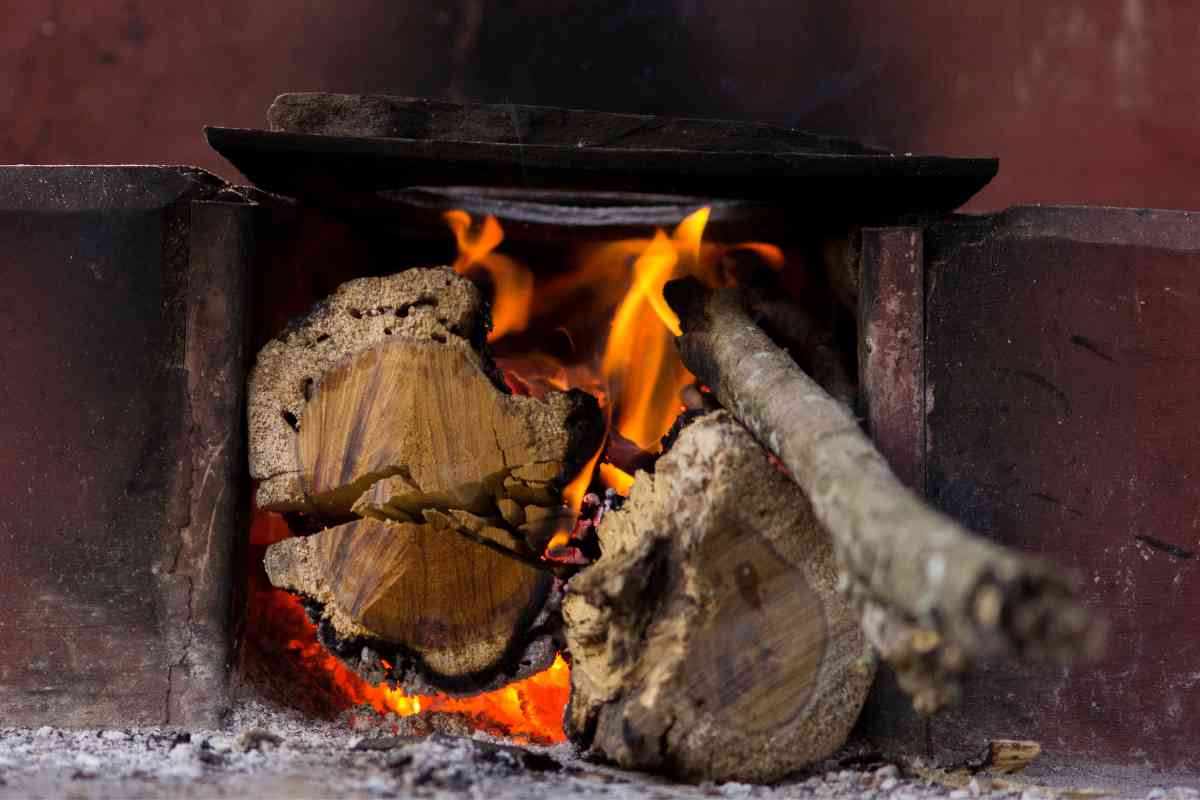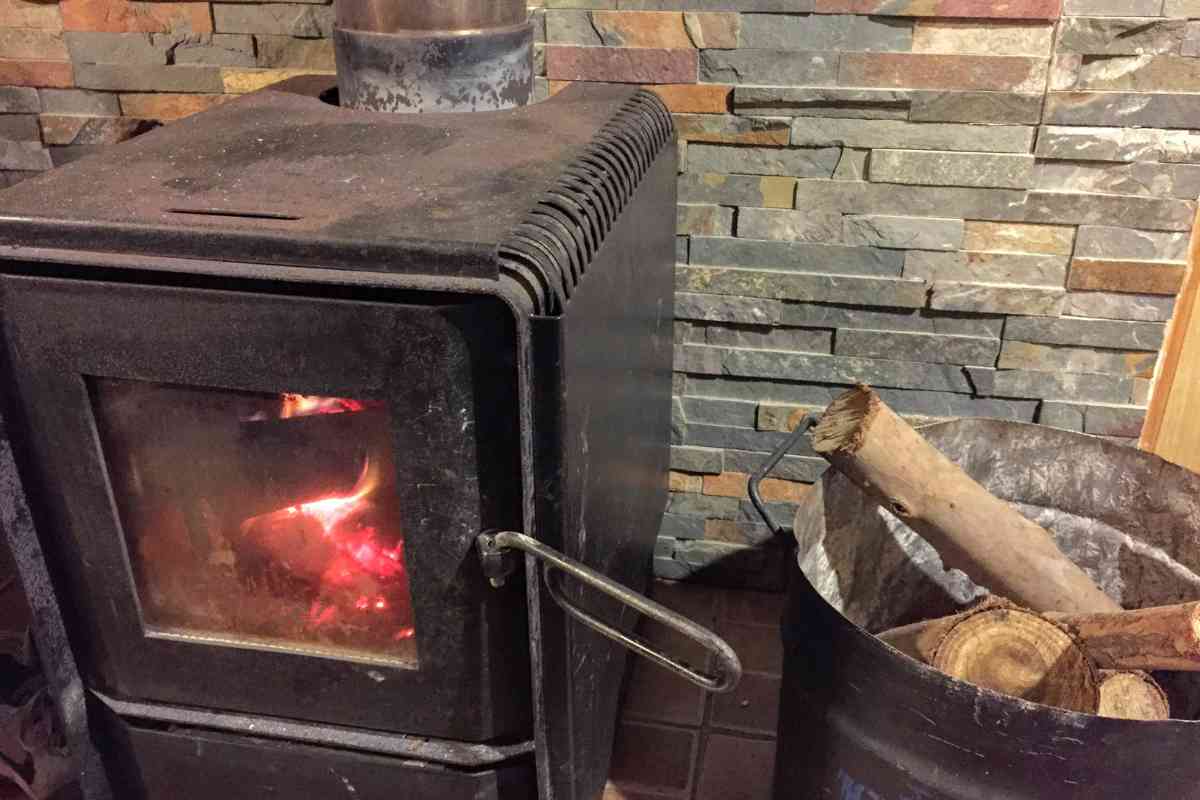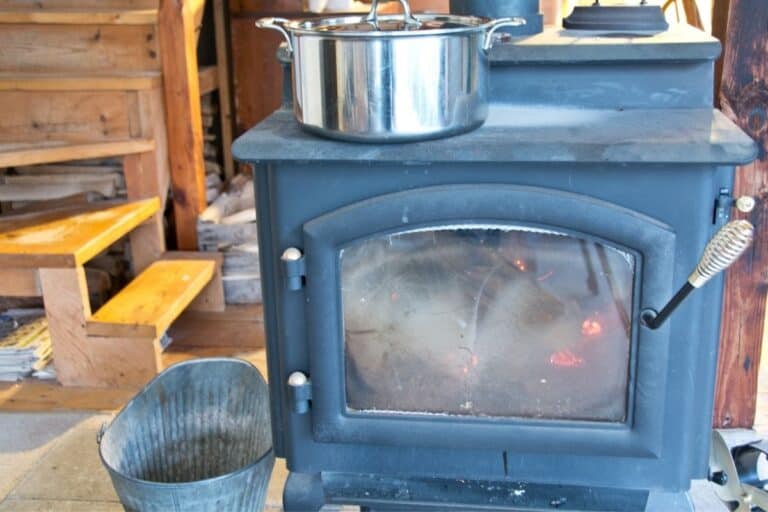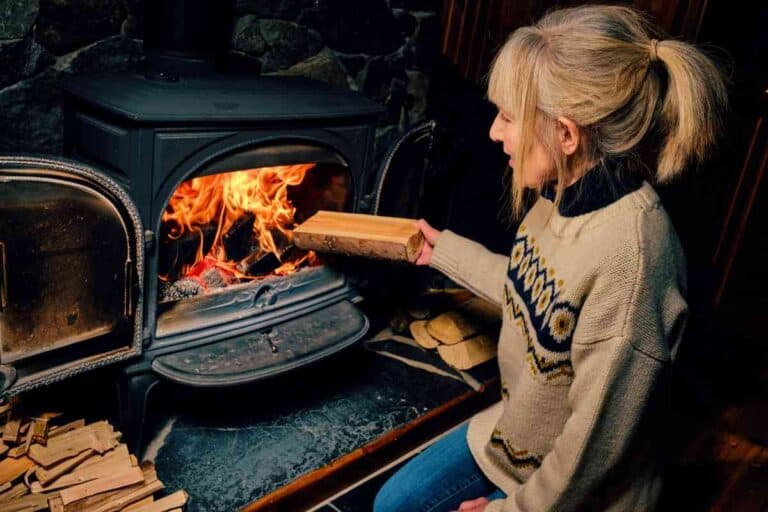Want To Use Charcoal Lighter Fluid In A Wood Stove? Read This First!
You may be wondering whether you can use charcoal lighter fluid in a wood stove. Our guide comes with the answers you are looking for.
Can you use charcoal lighter fluid in a wood stove?
You shouldn’t use charcoal lighter fluid in a wood stove. It can cause an explosion, thus damaging your stove or burning your house. Also, this igniter fluid produces toxic gasses and fumes. Instead, use safer substitutes like vegetable oil, electric lighter, alcohol, or sugar.
Keeping warm during the cold season is a matter of your health, and this is not something that you can compromise. The question, then, becomes how you can do this in a sustainable way, more so when it comes to the cost of heating. Again, you want to keep warm in an efficient way.
When it’s cold and chilly, most people will turn to their wood stoves to heat their homes and keep them warm.
The issue is that lighting a wood stove and getting the fire going can sometimes prove to be a challenging and frustrating experience. This is due to the challenges that this method carries when it comes to heating.
As a result, some will opt to use accelerants such as charcoal lighter liquid to get the fire going. But is it safe to use this fluid in a wood stove? Can you use it in a wood stove? We have the answers.

Is It Safe to Use Charcoal Lighter Fluid in a Wood Stove?
Without a doubt, lighting a wood stove is a demanding task. And, it’s only natural that you would turn to a solution that will make the process easier and faster, such as charcoal igniter fluid.
However, as much as such accelerants may help to speed up the process, it’s not advisable to use them. Using this ignitable liquid in a wood stove poses various health and safety risks, and you should avoid using this method.
Charcoal igniter fluid poses a fire risk. While it may speed up the process, it may end up causing a huge flame.
And this flame may escape the fireplace and ignite the areas around the fireplace, causing a huge fire that can lead to devastating consequences on both human life and property.
Once the fire spreads to the rest of the house, it will cause costly damage worth thousands of dollars.
Also, the fire may cause serious injuries or deaths to the people living in that house. There have been several reported incidents of house fires resulting from the use of accelerants to light a wood stove.
As you may probably know, this fluid is a by-product of petroleum. So, when it’s used to light a fire indoors, it will release harmful and toxic fumes.
And when ingested, these toxic fumes can cause a wide range of health issues, such as throat and stomach pain, breathing challenges, constant irritation in several parts of the body as well as vomiting, among others.
We should also point out that the harmful chemicals and fumes that this ignitable liquid will release when combusting can contribute to air pollution.
When released into the atmosphere, the various chemicals present in this ignitable liquid will mix with various other pollutants in the air, forming ground-level ozone – which can cause serious damage to the ecosystem.
According to the Iowa Department of Natural Resources, inhaling ground-level ozone can cause a wide range of health conditions, including congestion, throat irritation, coughing, and chest pain.
Also, it can worsen bronchitis and asthma symptoms while reducing lung function.
Charcoal Lighter Fluid Alternatives
Charcoal igniter liquid will undoubtedly provide you with a convenient, fast and effortless means of getting your wood stove going.
The problem is that its risks and drawbacks outweigh the benefits by far.
Fortunately, there are plenty of other alternatives out there that you can use to light a wood stove instead of this accelerant. Here are five reliable options for lighting a wood stove.

Electric Metal Lighter
An electric metal lighter or starter is a great alternative for charcoal igniter liquid. It’s easy to use, convenient, and doesn’t come with the risk associated with accelerants.
With this tool, you will manage to get the fire going in your charcoal stove within a minute or so.
To use this device, you need to plug it into an electrical outlet close to your wood stove. From there, position it under the wood in your stove. After a short while, the metal element in the device will get hot and ignite the hot.
You will then unplug it from the electrical outlet and remove it from the fireplace once the wood starts burning and turns into gray ash.
If you are short on time, then an electric metal lighter provides one of the fastest and safest means of lighting a wood-burning stove.
Alcohol
Alcohol is a highly flammable liquid, meaning it’s also a great option. Vodka and whisky are the go-to options for most people. However, any alcoholic drink with high alcohol content can do the job.
If you decide to use this option, it’s recommended to douse some old paper towels or newspapers with your preferred alcoholic drink.
You then place these newspapers or paper towels under the wood in your stove’s fireplace and light the newspapers using a matchbox or any lighter that you have. Once they catch fire, the newspapers will consequently ignite the wood.
Alcohol evaporates quite fast. So, although it works well and doesn’t pose any serious health and safety risks, it can be quite expensive to rely on it as your main method.
So, it’s only recommended when you’ve run out of options.
Vegetable Oil
Most people are surprised to hear that oil can also work as a substitute for accelerants. Well, it works extremely well when it comes to lighting wood-burning stoves and grills. And better yet, it’s straightforward to use too.
Using vegetable oil follows the same procedure as alcohol, meaning having to first soak some old newspapers or paper towels in vegetable oil.
The next step is to place the newspapers under the wood in the fireplace and light them up.
In case you don’t have any vegetable oil in the house, you can instead use lard or fat if you have some lying around.
Again, you have to follow the same process of dousing the newspapers with lard or bacon grease, placing them under the wood in the fireplace and lighting them.
Sugar
You also have the option of using sugar to light your wood stove instead of this accelerant. It contains glucose, which is made up of hydrocarbons, meaning it provides everything needed to start a fire.
You will first need to spread it on the wood that you’ve already placed in the fireplace. Also, place some around the wood.
Once you’ve done that, light it and add some old newspapers to ignite the wood faster.
It’s worth pointing out that sugar is not a long-term solution. As you may expect, you will require quite a considerable amount of sugar to light the wood completely. And, this comes at a cost.
So, sugar should only be a one-off solution.

Egg Cartons
If you have some old egg cartons lying around, then they provide yet another reliable option as a substitute. Using cartons is also straightforward, just like the other methods we’ve discussed here.
You simply need to cut the cartons into smaller pieces, place them in the fireplace, place some kindling on top, and add some wood.
From there, you simply need to light the egg cartons.
But only use cardboard egg cartons. Avoid burning Styrofoam or plastic egg cartons since they will produce toxic gasses, which will be harmful to your health.
Key Takeaways
- You shouldn’t use charcoal igniter fluid in a wood stove
- Using this fluid in a wood stove can cause health issues
- Charcoal igniter fluid also pose a fire risk
- There are plenty of safer alternatives to this accelerant



![What Is Mushroom Compost? [Contents, Uses, Pros, and Cons]](https://freedomresidence.com/wp-content/uploads/2022/05/What-Is-Mushroom-Compost-768x512.jpg)


